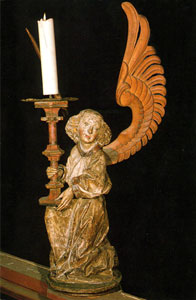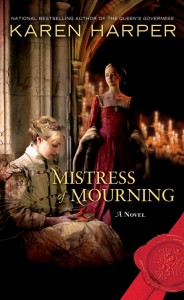By Karen Harper
 I have researched Tudor culture for years while writing my novels set in that era, but when I prepared to write MISTRESS OF MOURNING (titled THE QUEEN’S CONFIDANTE in the UK,) I realized I knew little about embalming practices, at least those for the noble and royal. When I learned my chandler heroine would not only make and sell candles but deal in waxen shrouds (cerements,) I found her occupation doubly intriguing.
I have researched Tudor culture for years while writing my novels set in that era, but when I prepared to write MISTRESS OF MOURNING (titled THE QUEEN’S CONFIDANTE in the UK,) I realized I knew little about embalming practices, at least those for the noble and royal. When I learned my chandler heroine would not only make and sell candles but deal in waxen shrouds (cerements,) I found her occupation doubly intriguing.
Votive candles for the dead were a huge business. Many funeral candles for the rich, a few for the poor. But chandlers also made shrouds from Holland cloth permeated with wax, which were carefully rolled to prevent cracking. Corpses of the rich and noble were wrapped in these after a procedure in which organs were removed by either physicians, barber surgeons (there was much strife between these two groups) or yes, chandlers.
Then, of course, there were very talented chandlers/wax carvers who produced the “masks” for effigies of the rich and famous. Royals like Queen Elizabeth I had death masks made to go with their effigies which lay atop their coffins for their public funeral processions through the streets. When Henry VIII died, surgeons to remove the organs, apothecaries with sweet herbs to fill the empty body cavities, and wax chandlers were summoned to the palace.
The idea of portrait waxes and wax shrouds goes back to the Egyptians, Greeks and Romans. Wax was an easy medium to use with hands and simple tools, and, of course, wax greatly emulates skin. In my novel, which begins in 1501, it is my merchant-class heroine’s talent for wax carving that brings about her summons to the palace, for the

wife of King Henry VII wants effigies of her dead children—and help solving a double murder.
Karen Harper is the New York Times bestselling author of historical novels and contemporary suspense. Her current historical novel is MISTRESS OF MOURNING from NAL. Please visit her website at www.KarenHarperAuthor.com
